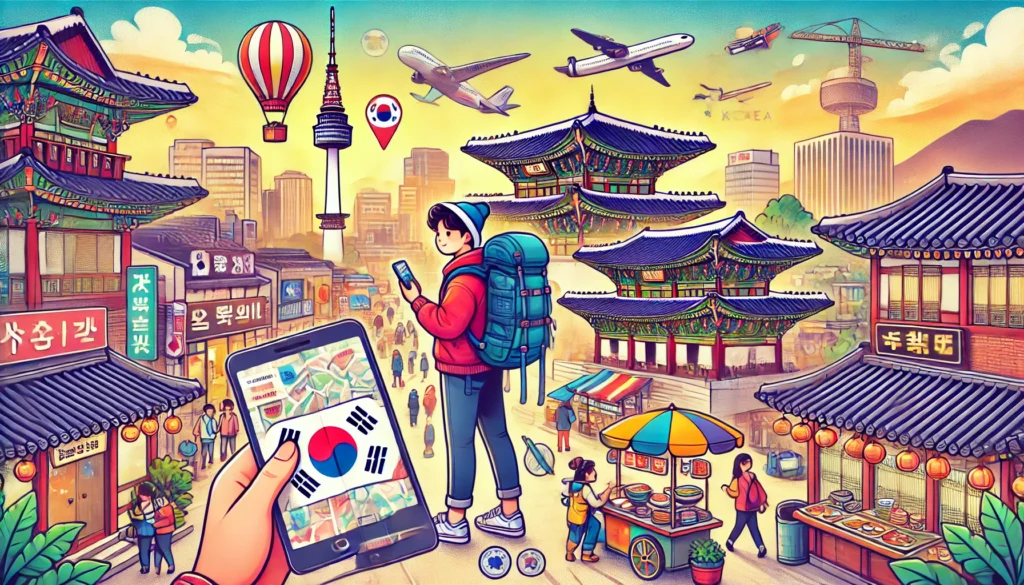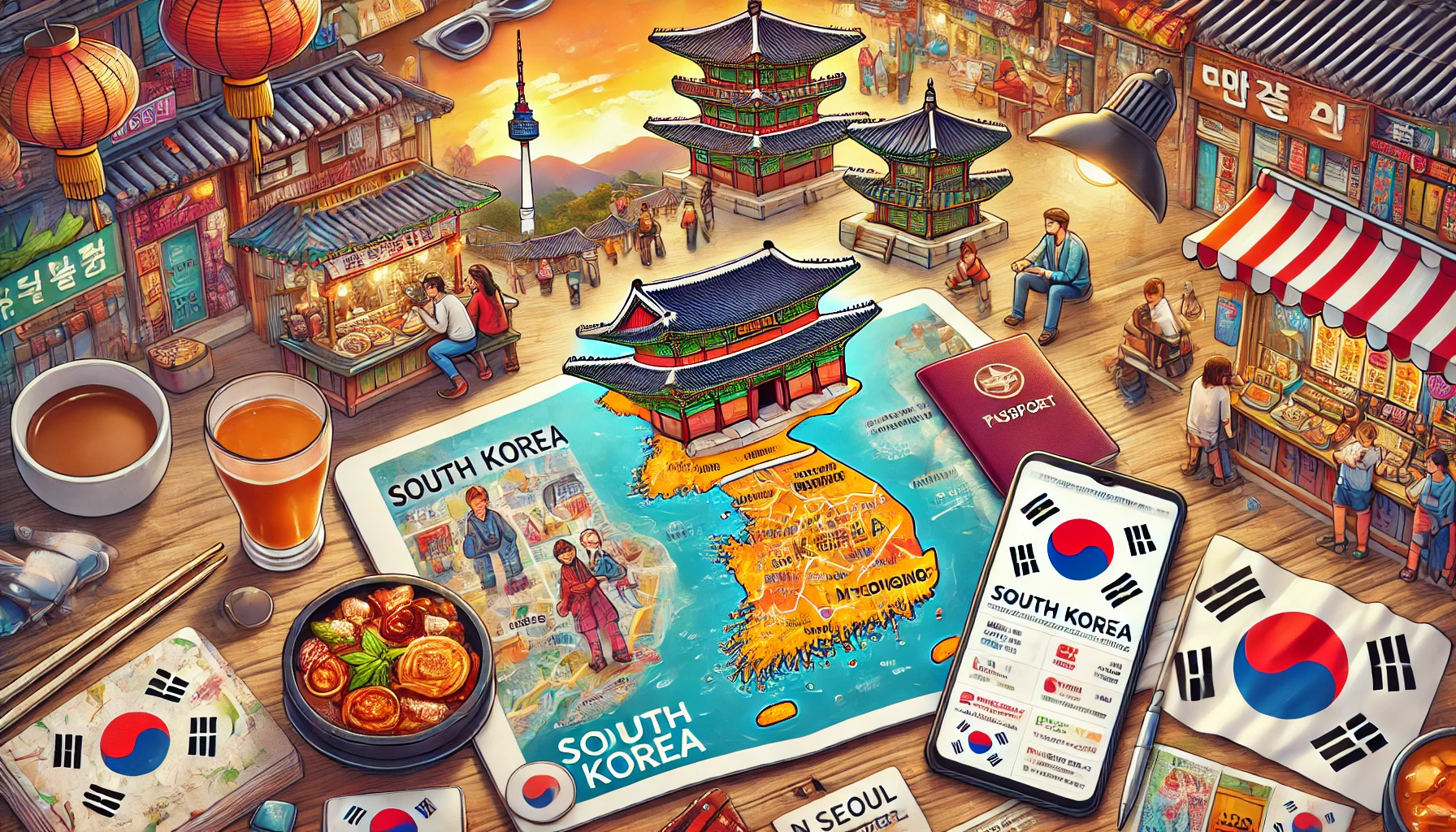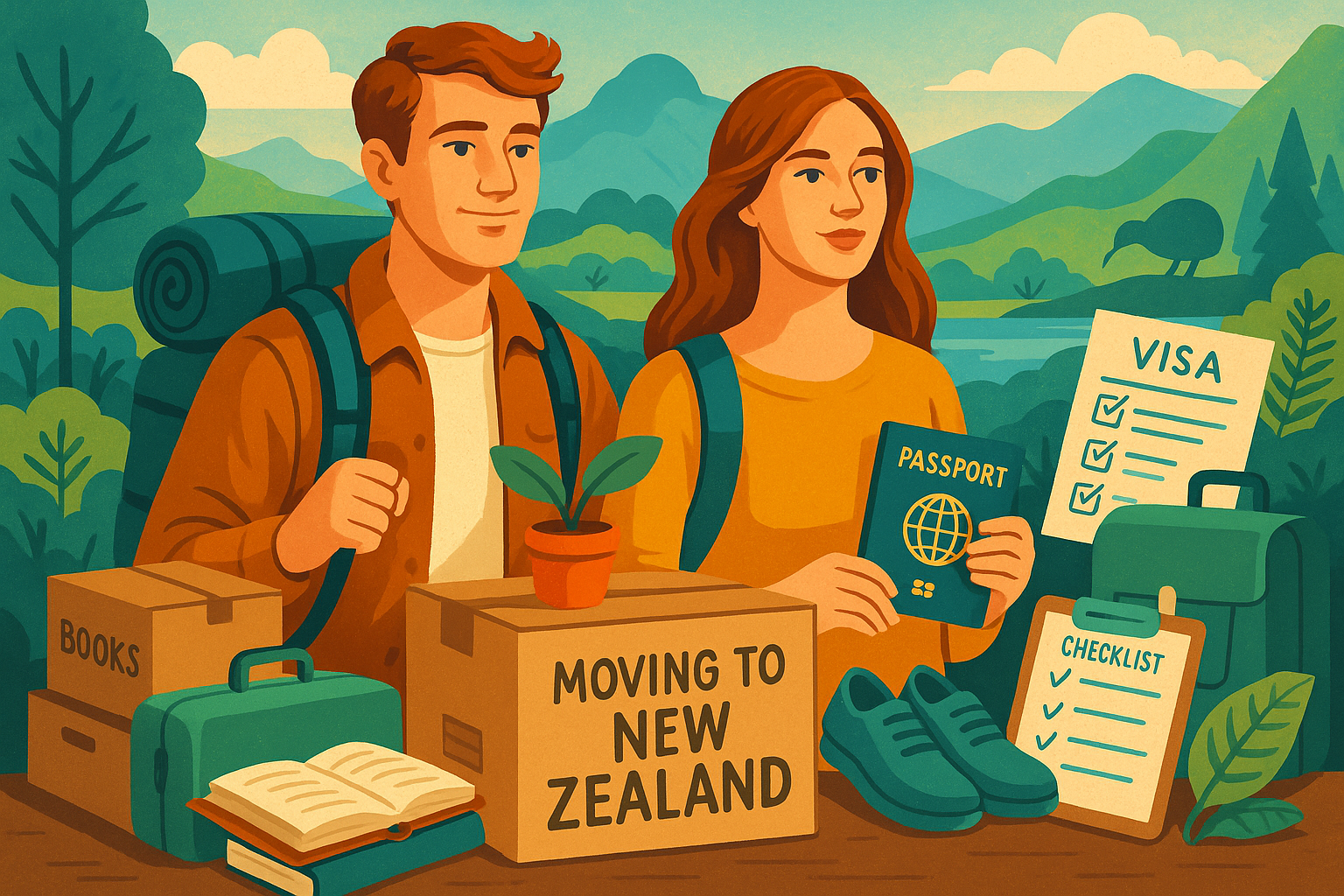Table of Contents
Understanding South Korean Culture
South Korea is a nation steeped in rich history and vibrant cultural traditions that shape everyday interactions and social norms. For first-time travelers, a nuanced understanding of this cultural landscape can significantly enhance their experience. One of the fundamental aspects of South Korean culture is the emphasis on respect and etiquette, which are deeply woven into the fabric of society. Bowing, for instance, is a common form of greeting and is indicative of the respect one extends to others. The depth of the bow can vary, with lower bows demonstrating greater respect, especially towards elders or those in positions of authority.
Politeness plays a crucial role in interpersonal interactions in South Korea. Social norms dictate that individuals use honorific language depending on the age and status of the person they are interacting with. This linguistic formality reflects the high regard placed on hierarchy and community values. Therefore, it is important for visitors to approach conversations with a level of deference, paying attention to the use of honorifics and appropriate greetings to foster positive communication.
Moreover, unique cultural practices, such as sharing food and engaging in traditional tea ceremonies, are excellent occasions for bonding and showing goodwill. It is customary to wait for the eldest person to start a meal before eating and to pour drinks for others rather than oneself, demonstrating a collective approach to social gatherings. Understanding these customs not only enriches the travel experience but also signals respect towards the local populace.
Familiarity with these aspects of South Korean culture serves as an invaluable tool for travelers. Being mindful of local etiquette, respecting community values, and adhering to social norms ensure pleasant interactions, fostering goodwill and appreciation between visitors and residents alike.

Transportation Options in South Korea
South Korea offers an extensive and reliable transportation network that facilitates easy movement around its bustling cities and scenic regions. One of the most efficient methods of travel is the subway system, particularly in major urban areas such as Seoul and Busan. The subway not only connects a large portion of the city but also runs with remarkable punctuality. For first-time travelers, purchasing a T-money card is highly recommended; this rechargeable card can be used on the subway, buses, and even for small purchases at convenience stores. The cards can be easily obtained at convenience stores or subway stations, making them a convenient option for navigation.
Buses are another vital component of the transportation system in South Korea. They cover areas that may not be accessible by subway and are divided into various classes—local, express, and intercity—catering to different travel needs. The bus stops feature signs and displays that indicate upcoming buses, including their routes and destinations, although language barriers might pose challenges for non-Korean speakers. It is advisable to use a translation app or seek assistance from local residents if needed.
Taxis are also widely available and provide a more personalized mode of transport. While they are typically more expensive than public transit, they can be a practical option for late-night travel or when carrying heavy luggage. It is worth noting that most taxis in South Korea have English-speaking drivers or can communicate basic directions through mobile apps. For longer distances, domestic flights connect major cities and tourist destinations across the country efficiently. This allows travelers to optimize their time and explore even further afield. Understanding these transportation options will significantly enhance the travel experience for first-time visitors to South Korea.
Essential Language Phrases
When traveling to South Korea, knowing some key phrases in Korean can greatly enhance your experience. While many locals in urban areas speak English, making an effort to communicate in their native language can foster positive interactions and show respect for the culture. Here are some fundamental phrases that first-time travelers should familiarize themselves with:
Greetings: A simple “안녕하세요” (annyeonghaseyo) means “hello” in a polite manner. Another important greeting is “안녕히 가세요” (annyeonghi gaseyo), used to say goodbye to someone who is leaving. When you are leaving, you can say “안녕히 계세요” (annyeonghi gyeseyo) to someone staying.
Basic Inquiries: For travelers needing assistance, phrases like “여기 어디예요?” (yeogi eodieyo?) which translates to “Where is this place?” can be invaluable. If you need directions, “지금 어디에요?” (jigeum eodieyo?) means “Where am I now?” This can be particularly useful when trying to navigate the public transportation system.
Common Expressions: Expressions such as “감사합니다” (gamsahamnida) meaning “thank you” and “죄송합니다” (joesonghamnida) for “I’m sorry” can help you convey politeness. If you want to ask for something, you can say “이거 주세요” (igeo juseyo), which translates to “Please give me this.”
For those who wish to enhance their Korean language skills further, various resources are available. Language learning apps like Duolingo or Memrise offer interactive ways to practice essential vocabulary and phrases. Additionally, YouTube channels dedicated to Korean language learning can provide valuable pronunciation tips and cultural context, assisting travelers in their pre-trip preparations. Familiarizing yourself with these essential language phrases can significantly ease communication and enrich your travel experience in South Korea.
Must-Try Korean Cuisine
Korean cuisine represents a vibrant tapestry of flavors, textures, and aromas, offering first-time travelers an exciting introduction to South Korea’s cultural heritage. One of the most iconic staples is Kimchi, a fermented vegetable dish, typically made from napa cabbage and radishes, seasoned with chili pepper, garlic, and ginger. This celebrated side dish serves not only as a flavorful accompaniment but also plays a pivotal role in Korean dining customs, symbolizing the importance of fermentation in the cuisine.
Another dish that travelers should not miss is Bibimbap. Translating to ‘mixed rice,’ Bibimbap features a delightful medley of ingredients, including seasoned vegetables, a protein choice such as beef, and a fried egg, all served over rice. Diners mix the ingredients together with spicy gochujang (red chili paste) to create a harmonious blend of flavors. This dish is not only satisfying but also showcases the principle of balance in Korean meals.
For those seeking a unique dining experience, Korean BBQ is a must-try. Diners can grill their own cuts of marinated meat, such as bulgogi or galbi, at their table, creating an interactive atmosphere. Accompanying sides like pickled vegetables and sauces enhance the experience. When searching for an authentic Korean BBQ restaurant, look for places that offer high-quality ingredients and a vibrant ambiance.
In addition to these must-try dishes, street food markets are ideal for sampling a variety of Korean snacks. For example, Gwangjang Market in Seoul is famous for its bindaetteok (mung bean pancakes) and hotteok (sweet pancakes). As you explore these culinary delights, remember that sharing round dishes and enjoying meals together embodies the essence of Korean dining culture.
Understanding the Weather and Best Time to Visit
South Korea experiences four distinct seasons: spring, summer, autumn, and winter, each offering unique weather conditions and experiences for travelers. Spring, occurring from March to May, is characterized by mild temperatures and blooming cherry blossoms, making it an ideal time for nature enthusiasts. The vibrant festival known as the Yeouido Cherry Blossom Festival draws visitors from across the globe, providing a picturesque backdrop for exploration.
Summer, spanning from June to August, can be quite hot and humid. Temperatures often exceed 30°C (86°F) with high humidity levels. Despite the heat, summer offers lively festivals, such as the Boryeong Mud Festival, where tourists can engage in various fun activities. However, visitors should pack light, breathable clothing and be prepared for sudden summer rainstorms, which can be frequent during this period.
Autumn, running from September to November, showcases one of South Korea’s most captivating landscapes, as the leaves change color. The weather during this season is mild and pleasant, making it perfect for outdoor activities like hiking in places such as Seoraksan National Park. The peak of autumn foliage typically occurs in late October, drawing many travelers for the breathtaking views.
Finally, winter in South Korea, from December to February, is marked by cold temperatures and snow, especially in the northern regions. This season attracts winter sports enthusiasts to ski resorts in places like Pyeongchang, famous for its winter Olympic venues. If visiting during winter, travelers should plan to dress warmly, layering clothing for comfort.
In choosing the best time to visit South Korea, personal preferences regarding weather and activities should guide decision-making. Each season offers distinct experiences, so understanding the climate is crucial for making the most of your journey.
Safety Tips for Travelers
Traveling to South Korea can be an exhilarating experience, with its rich culture, delicious cuisine, and advanced infrastructure. However, as with any travel destination, it’s important to remain aware of your surroundings and prioritize safety while enjoying your journey. South Korea is generally considered a safe country, with low crime rates and a well-developed emergency response system. Nonetheless, travelers should take certain precautions to ensure a smooth and enjoyable trip.
One key aspect of travel safety is health consideration. Visitors are encouraged to stay informed about vaccinations and health precautions prior to their arrival. It is advisable to have travel insurance that covers any medical emergencies, which provides peace of mind while abroad. Additionally, South Korea has a robust healthcare system, and in case of illness or injury, numerous hospitals and clinics are available. It is also beneficial for travelers to have a list of local emergency contacts, including the nearest hospital and the local police station, readily accessible.
Another essential safety tip involves being mindful of common scams targeting tourists. While most locals in South Korea are helpful and welcoming, it is advisable to be cautious of individuals who approach you with unsolicited offers or services, particularly in crowded areas. It’s prudent to rely on official resources or verified information when seeking recommendations for accommodation or tours. Keeping personal belongings secure and avoiding displaying valuable items prominently can also help in minimizing risks.
Lastly, staying vigilant and aware of your surroundings is crucial while exploring urban areas. Utilize designated pedestrian pathways and obey traffic signals. It is advised to travel in groups when possible, particularly at night, to enhance personal safety. With these precautions in mind, first-time travelers can confidently navigate South Korea and enjoy its many wonders.
Local Customs and Etiquette
Understanding local customs and etiquette is crucial for first-time travelers to South Korea, as it reflects the culture’s respect and social harmony. One of the most notable customs is the importance of dining manners. When eating with others, it is customary to wait for the eldest person to begin the meal before starting. Additionally, it is polite to hold your bowl with both hands when you are eating, especially with rice or soup. When taking or passing food, using both hands is a sign of respect.
Tipping is not a common practice in South Korea, as service charges are often included in bills at restaurants and cafes. However, rounding up the bill or leaving small change at places such as bars or taxis is occasionally appreciated. It is advisable to note that excessive tipping may be viewed as inappropriate.
Public behavior also carries significant cultural weight in South Korea. Maintaining a calm and composed demeanor in public places is highly valued. Speaking softly and avoiding loud conversations helps to maintain a peaceful environment. Additionally, physical displays of affection, such as hugging or kissing, are generally discouraged in public. Understanding personal space and avoiding unsolicited contact with strangers showcases respect for personal boundaries.
Visiting temples or traditional sites requires a heightened awareness of customs. It is customary to remove shoes before entering such sites, and modest clothing that covers shoulders and knees is recommended. During temple visits, bowing politely when greeting monks or temple staff is a way to convey respect. Furthermore, electronic devices should be silenced or turned off to preserve the serene atmosphere.
By embracing these cultural norms and etiquette guidelines, travelers can ensure a respectful and enjoyable experience while exploring South Korea and its rich traditions. Familiarizing oneself with these pointers will enhance interactions with locals and contribute to a more immersive and meaningful travel experience.
Exploring Popular Destinations
South Korea is a nation rich with diverse experiences, making it an ideal destination for first-time travelers. Among its bustling urban centers, Seoul stands out, offering a blend of modernity and tradition. The capital city is home to iconic landmarks such as Gyeongbokgung Palace, which showcases the country’s regal heritage with its stunning architecture and changing of the guard ceremony. Visitors can also explore vibrant districts like Myeongdong, renowned for shopping and delicious street food options, or Insadong, known for art galleries and traditional tea houses.
Further south lies Busan, South Korea’s second-largest city, famous for its beautiful beaches, such as Haeundae and Gwangalli, as well as the picturesque Gamcheon Culture Village, with its colorful houses and artistic vibe. The Jagalchi Fish Market is a must-visit for seafood lovers, presenting an authentic glimpse into the local culture.
For those interested in natural beauty, Jeju Island is an exceptional choice, often referred to as South Korea’s paradise. The island offers stunning landscapes including Hallasan National Park, where travelers can hike up to the country’s highest peak. Additionally, the breathtaking Seongsan Ilchulbong, or Sunrise Peak, invites visitors to witness a magnificent sunrise, while the unique Manjanggul Cave provides insights into the volcanic history of the region.
No trip to South Korea would be complete without a visit to the Demilitarized Zone (DMZ). This area serves as a buffer zone between North and South Korea and offers guided tours that address the historical significance of the peninsula. Travelers can gain perspectives on the division and ongoing reconciliation efforts. Travel tips include booking tours in advance and adhering to regulations while in the DMZ to ensure safety and respect for the site.
Overall, South Korea boasts a rich tapestry of cultural landmarks, historical sites, and natural wonders, making it a must-visit destination for any traveler.
Essential Travel Apps and Resources
Traveling to South Korea for the first time can be an exhilarating yet daunting experience. Fortunately, various travel apps and online resources are available to help simplify the adventure and enhance the overall journey. The right tools can make navigating this vibrant country more manageable for first-time travelers.
One vital category of apps is language translation. For travelers who may struggle with the Korean language, apps like Google Translate can bridge the communication gap. It provides text translation services and features a camera function that allows users to translate signs or menus seamlessly. Another helpful app is Papago, which specializes in translating Korean to multiple languages, making it particularly useful when engaging with locals.
Navigation can also be a challenge for newcomers. Applications such as Naver Map and KakaoMap are exceptional for getting around. Unlike Google Maps, these services offer superior accuracy for South Korea, providing detailed public transport information, walking directions, and local traffic updates. Additionally, public transportation apps like Seoul Subway and Busan Bus make mastering local transit systems a breeze.
Finding accommodation and dining options can significantly influence the quality of a travel experience. For lodging, Airbnb and Agoda are popular platforms for booking a range of accommodations, from hotels to unique stays. When it comes to food, apps such as MangoPlate provide personalized restaurant recommendations based on user reviews, ensuring that travelers can savor authentic Korean cuisine. Moreover, the app Baedal Minjok allows users to order food conveniently, even for those who might not speak the language fluently.
Furthermore, understanding cultural nuances is essential for a richer experience. Websites like VisitKorea offer insights into local customs, events, and attractions, making it easier for travelers to immerse themselves in South Korean culture. By utilizing these travel apps and resources, first-time travelers can maximize their experience in South Korea effectively.







This is a very good tips especially to those new to blogosphere, brief and accurate information… Thanks for sharing this one. A must read article.